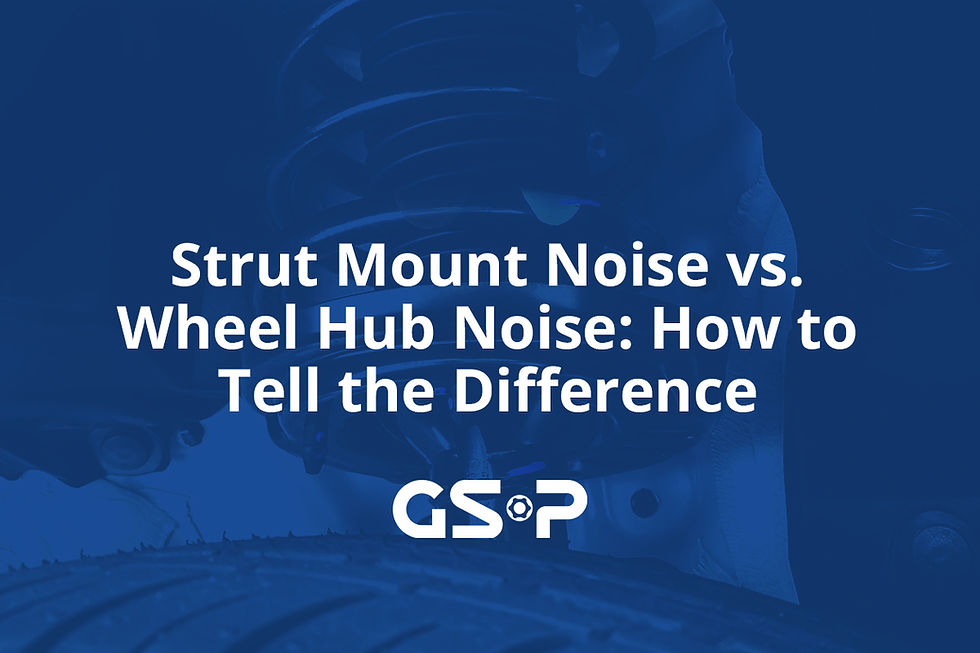How To Diagnose A Suspension Squeaking Sound
- chaseteam
- May 8
- 2 min read
A suspension squeak might seem like a small annoyance, but it’s often a sign of wear, lack of lubrication, or damaged components that need attention. If left unchecked, that squeak can turn into a bigger problem, affecting your comfort, handling, and safety.
At GSP Latin America, we specialize in aftermarket suspension components built for performance and durability. Knowing how to properly diagnose squeaking can help you maintain your suspension, avoid costly repairs, and ensure your vehicle stays road-ready.
What Causes Suspension Squeaking?
Suspension squeaks are usually caused by friction between moving parts, often when rubber bushings, joints, or mounts dry out or degrade. Common causes include:
Worn or dry bushings in control arms, sway bars, or trailing arms
Ball joints or tie rod ends with torn or dried-out dust boots
Lack of lubrication in greasable suspension components
Rust or surface corrosion causing binding between metal parts
Misaligned components rubbing under stress
These issues are more likely to occur in older vehicles, in rough climates, or where regular suspension maintenance has been overlooked.
How to Identify the Source
To effectively diagnose a suspension squeak, follow these steps:
Listen carefully – Determine if the squeak occurs during turns, over bumps, or when braking. This can help pinpoint which part of the suspension is affected.
Perform a bounce test – Push down on each corner of the vehicle. If you hear a squeak when compressing or releasing, it could indicate dry bushings or worn shocks.
Inspect visually – Look for cracked bushings, leaking shocks, or dry ball joints. Check for rust or dirt buildup around suspension mounts and joints.
Use lubrication to isolate – Carefully apply a silicone-based lubricant to bushings one at a time. If the squeak goes away temporarily, you’ve likely found the problem part.
Lift the vehicle – Safely raise the vehicle and check for play in joints and arms. Excessive movement or resistance often indicates wear or damage.
When to Replace Parts
If lubricating bushings doesn’t fix the issue or if you notice worn boots, excessive rust, or degraded rubber, it’s time to replace the affected components. GSP Latin America offers durable, weather-resistant suspension parts that are ideal for restoring quiet, reliable performance.
Hearing squeaks? Let GSP Latin America help you diagnose and solve suspension issues with high-quality replacement parts built to last.














Comments